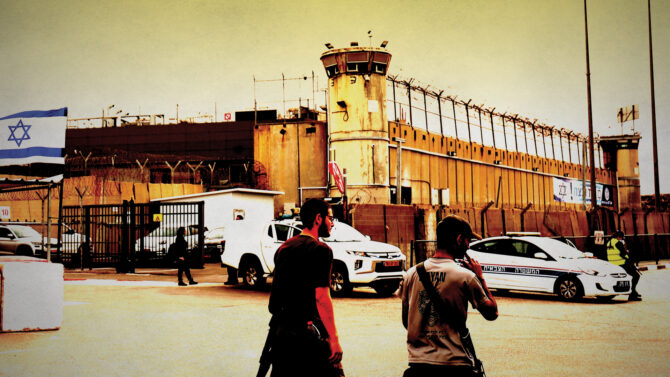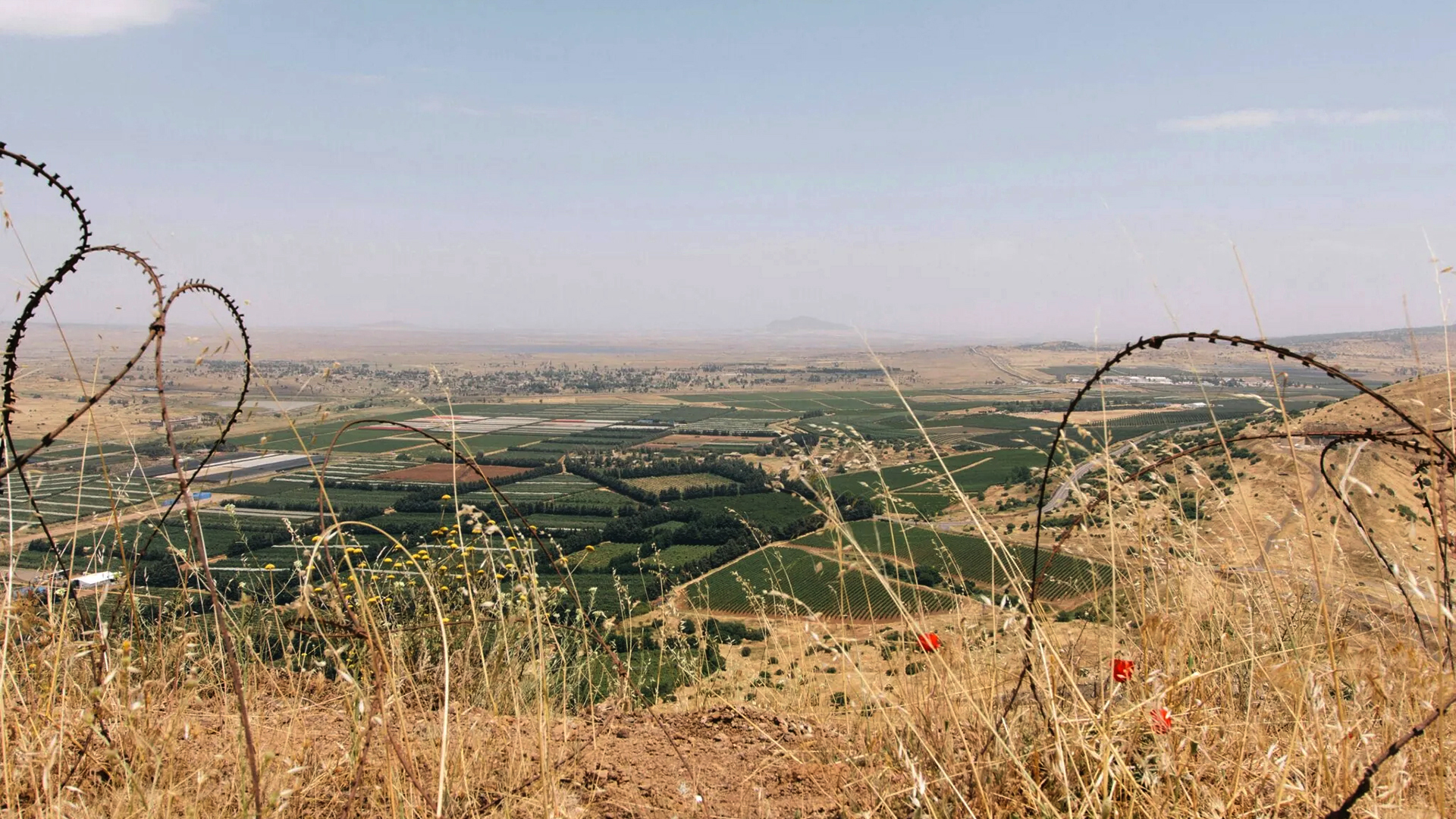The original article was published by INKSTICK on 6/3/2024 and was reproduced with permission.
Pictures: Robert Bye
And as it escalates, we need to bring peace back onto the international agenda.
As advances in artificial intelligence accelerate, the ways state and nonstate actors apply it in conflict environments will grow. From Ukraine to the Gaza Strip, militaries are applying technology in different ways to advance their interests from weapons systems to the information space. Despite arguments that the battle in Ukraine is an example of a return to conventional warfare, the conflict is presenting a new level of technological war. Likewise, in Gaza, Israel is employing AI-enabled weapons and military equipment, at a far greater advantage than its adversary. As the rules-based international order continues to endure strain and the ability of multilateral institutions to bring countries together to resolve complex issues weakens, we are not prepared for how to manage the role that AI will play in multifaceted conflicts. This will be a critical year for determining whether global governance and peace are achievable within the international system.
Administrative Detentions: Why are 3,558 Palestinians detained without charge?

Administrative detention has always been a standard Israeli practice as a crackdown on violence. However, the number of Palestinian detainees has increased dramatically since Israel invaded Gaza.
AI Weapons and Military Equipment
Russia’s war against Ukraine is the future of conflict. The battle between Russia and Ukraine is taking place on the ground between armies and also within cyberspace. AI tools are enhancing the capacity of both armies as each seeks a strategic advantage over the other. One of the primary applications of AI in the war has been in intelligence gathering and surveillance. UAVs (unmanned aerial vehicles) equipped with AI-powered cameras and sensors have been extensively used for reconnaissance missions providing real-time data and imagery. The AI systems are trained to recognize military equipment, troop movements, and other strategic assets enabling commanders to make decisions based on data collected. AI is helping both armies process large amounts of information about the battlefield that would be incredibly challenging for military analysts.
There have been reports of both sides exploring or using semi-autonomous drones and loitering munitions. These drones can autonomously navigate through complex environments, identify targets, and even assess damage after attacks. They can identify and engage targets based on pre-programmed criteria, significantly reducing the decision-making time in combat situations. As Ukraine and Russia improve how AI is used in drones, there will be significant ramifications for future conflicts as this low-cost technology becomes more widespread.
AI has also been a significant factor in the cyber aspect of the conflict. Russian cyberattacks against Ukraine predate its full-scale invasion in February 2022 and has been a tool in Russia’s multifaceted war against Ukraine for years. Russia has reportedly used AI to help launch its attacks while AI has helped Ukraine defend itself from the cyber onslaught. AI systems can detect patterns indicative of cyber intrusions, automatically respond to threats, and even identify potential vulnerabilities in a network.
Israel’s war against Gaza is also shining a spotlight on the use of AI in conflict. Israel has explicitly discussed its use of AI in the conflict employing a system called “The Gospel,” which helps its military identify enemy combatants and equipment with the goal to reduce civilian casualties. The system gathers large amounts of data and makes targeting recommendations. In addition to target identification, Israel is using AI to map the network of tunnels Hamas built with UAVs operating underground that assist the military in its attacks.
Before AI adoption in the conflict between Russia and Ukraine, and Israel’s war in Gaza, autonomous drones were active in Azerbaijan’s attacks on Armenia in 2021. Azerbaijan’s military has benefitted from the country’s strong military relationships with Israel and Turkey. During the Second Karabakh War in 2020, Azerbaijan’s use of Turkish drones proved decisive in reclaiming territory from Armenia. Building on its miliary successes in 2020, Azerbaijan attacked Armenia in 2021 employing autonomous drones with loitering munitions which had the capability of exploding on impact near its target. Lacking advanced weaponry and strong military relationships like Azerbaijan, Armenia has been at a combat disadvantage with Azerbaijan which has shaped the fraught nature of negations between the two countries.
Wars Online
The information space has become another battlefield in wars. Even without advanced capabilities in weapons systems, adversaries in a war have sought to shape narratives about a conflict. Following Russia’s full-scale invasion two years ago, social media offered real-time developments as the war took shape. Alongside the mountain of posts, there were deepfakes of Zelensky surrendering to Russia and Putin announcing peace with Ukraine. AI is not needed to create a deepfake, but advances in AI image generation are making it ever easier to create one. As long as Russia continues to wage its war against Ukraine, AI-generated images and video will likely surface to pollute the information space and distort the truth.
After Hamas’ brutal attack on Israeli civilians and Israel’s subsequent war in Gaza, social media has served as another battlefield in the conflict. Disinformation, misinformation, propaganda, and deepfakes have flooded social media and messaging platforms. Digitally altered images have depicted atrocities or military attacks that did not happen. These types of altered images twist reality and contribute to the wave of emotions that grip societies and individuals during wars making it difficult to achieve peaceful nonmilitary solutions.
The presence of AI-generated content contributes to a broader climate of uncertainty and skepticism online as real events are increasingly questioned. This environment of doubt can undermine coverage of a war and the facts of whether a conflict party is committing atrocities or war crimes. AI use in generating online content that can then circulate widely is a challenge that is likely to intensify as this application of AI continues to evolve. In addition to the parties involved in a conflict, different groups have made use of misinformation and disinformation to support their preferred side. This has the potential to change the nature of conflicts as more parties become involved away from the actual fighting.
Global Governance and Peace
As advances in technology shape how wars are waged, state and nonstate actors are racing to incorporate or further integrate AI into their capabilities. AI’s multifaceted use in conflicts will shape the contours of global governance demanding a reevaluation of existing norms and the establishment of new legal frameworks.
The use of AI-powered autonomous weapons systems that are capable of making life-and-death recommendations from its processing of massive amount of data blurs the lines of accountability and raises profound ethical dilemmas. The international community stands at a crossroads, tasked with the urgent need to forge consensus on regulating such weapons, ensuring that they do not operate beyond the bounds of human control. Last year, the Biden administration led an effort to introduce an international framework on AI in military use. This is a first step, but more is needed as the countries with strong miliary capabilities did not join that effort. As Russia retreats from historic arms control agreements and such a framework is lacking involving China, the world is at the mercy of a handful states who continue to test out AI’s power in conflicts.
AI’s role in enhancing surveillance and intelligence gathering capabilities has significant implications for global power dynamics and could contribute to strengthening the capacity of authoritarian states. Peacebuilders, nonviolent activists, journalists, and civil society representatives looking for ways to achieve peace are at a profound disadvantage in the face of militaries and security forces increasing AI use. Additionally, the strategic advantage gained by nations with advanced AI capabilities threatens to widen the gap between the haves and the have-nots contributing to the challenge of devising and implementing global governance structures that manage the more pernicious uses of AI in war. The challenge for global governance is to ensure that this technological leap does not exacerbate existing inequalities or lead to a state of perpetual surveillance that enhances the power of authoritarian regimes at the expense of democracy.
As the war in Ukraine is demonstrating, technology companies are playing an increasingly prominent role in partnerships with states during the conflict. In considering future global governance options around AI use in conflicts from weapons systems to the information space, we need to also assess and regulate how companies are contributing to wars outside of national boundaries.
We should not be deterred by the tremendous work ahead. With the multitudes of conflicts around the world, the word and the concept of peace seems to have fallen by the wayside. We need to push to bring the goal of peace front and center on the international stage, particularly in the United Nations. Advanced military might through AI will not lead to a peaceful world or reinvigorate global governance. Countries need to remember the role diplomacy and inclusive dialogue can play in reducing tensions and ending wars.

